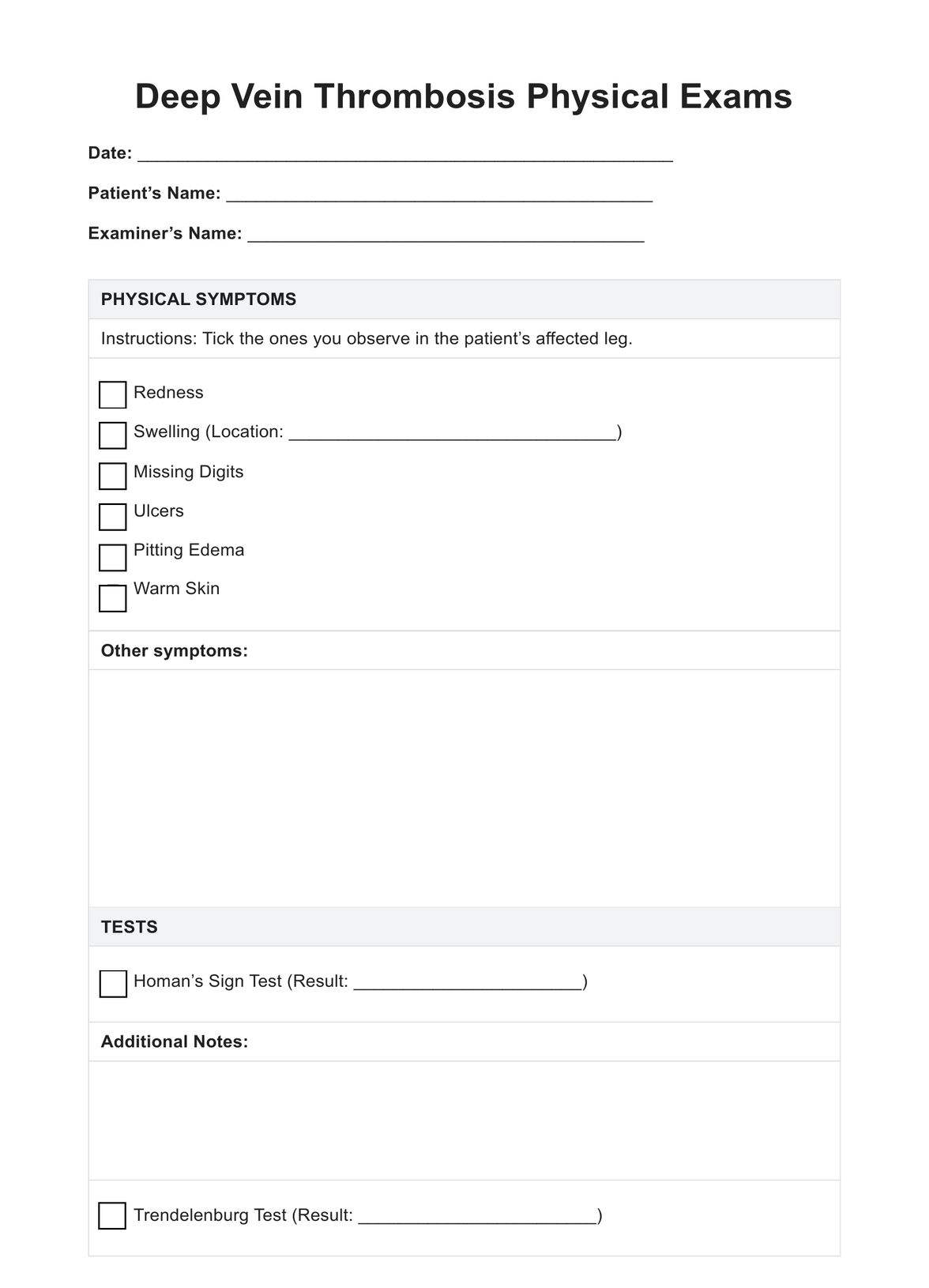Several practitioners, like primary care providers, hematologists, and vascular medical specialists, can use DVT physical exams.

DVT Physical Exam
Here’s a compilation of DVT physical exams you can conduct on your patient to assess if they have deep vein thrombosis. Click here for a guide and a copy of our free template.
DVT Physical Exam Template
Commonly asked questions
You use these exams when your patient is experiencing DVT symptoms in their legs or is at risk of developing the disease. For a comprehensive list of both, please refer to the “When Would You Use this Template?” section above.
You store the DVT physical exams by printing them out and placing them in a secure drawer alongside the patient’s other medical records. Alternatively, you can store them online on a HIPAA-compliant, secure EHR platform like Carepatron.
EHR and practice management software
Get started for free
*No credit card required
Free
$0/usd
Unlimited clients
Telehealth
1GB of storage
Client portal text
Automated billing and online payments











